Sound localization
When we perceive an incoming sound, we can determine not only loudness,
pitch and timbre of this sound but also its spatial
information such as the direction and distance of its source.
We call this "Sound Localization".
For example, when a person is called from the back,
he can perceive this direction.
If the physical factors of these spatial information are clarified,
it is possible to reproduce sound fields realistically.
How to perceive sounds
●HRTF (Head Related Transfer Function)
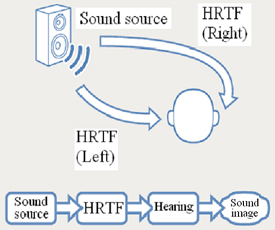
|
HRTFs (Head-Related Transfer Functions) describe sound
transfer characteristics from a source to the listener’s ears.
By using these characteristics, we can perceive spatial
directions and distances of sounds.
|
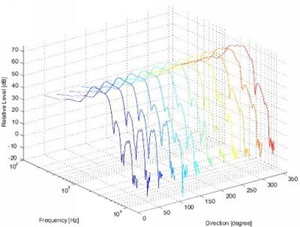
Fig.HRTF (Head Related Transfer Function)
|
HRTFs include the influence of the head and earlobe in a free
sound space where there is no reflected wave.
|
To HRTF database
Measurement of HRTFs
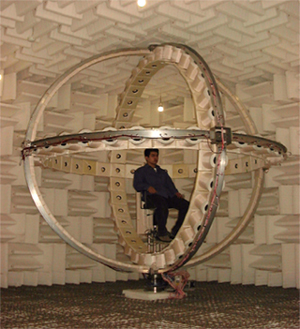
Fig. Speaker array for measuring HRTFs
|
HRTFs change according to direction. Furthermore, because HRTFs are influenced
by the shape of the head, ears, shoulders and such,they depend on the individual.
In this laboratory, we are constructing a HRTF corpus measured from over 100
individuals using a speaker array in an anechoic room.
We then research the relationship between
HRTFs and physical sizes.
|
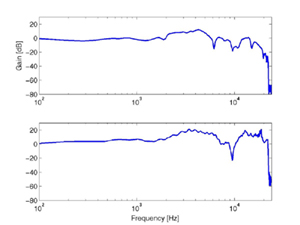
Fig. Measured HRTFs
(comparisons between two subjects)
|
|
|
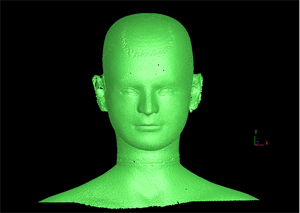
Fig. Shape of dummy head
|
Cue of Sound Localization
|
To perceive if the sound image's position is on the right side or the left side,
- Interaural Level Difference
- Interaural Time Difference
in HRTFs play important roles.
In the median plane that cuts the head in right and left, the difference between
the signals of both ears is small. It is said that distinctive peaks
and notches in HRTFs are cues to determine the perceived elevation.
We investigate directional
and individual dependency of these peaks and notches.
|
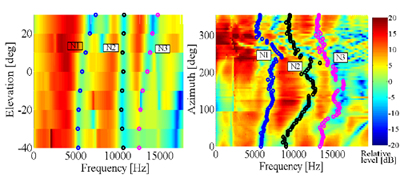
Fig. Distinctive Peaks and Notches in HRTFs
(Left : Change in elevation , Right : Change in azimuth)
|